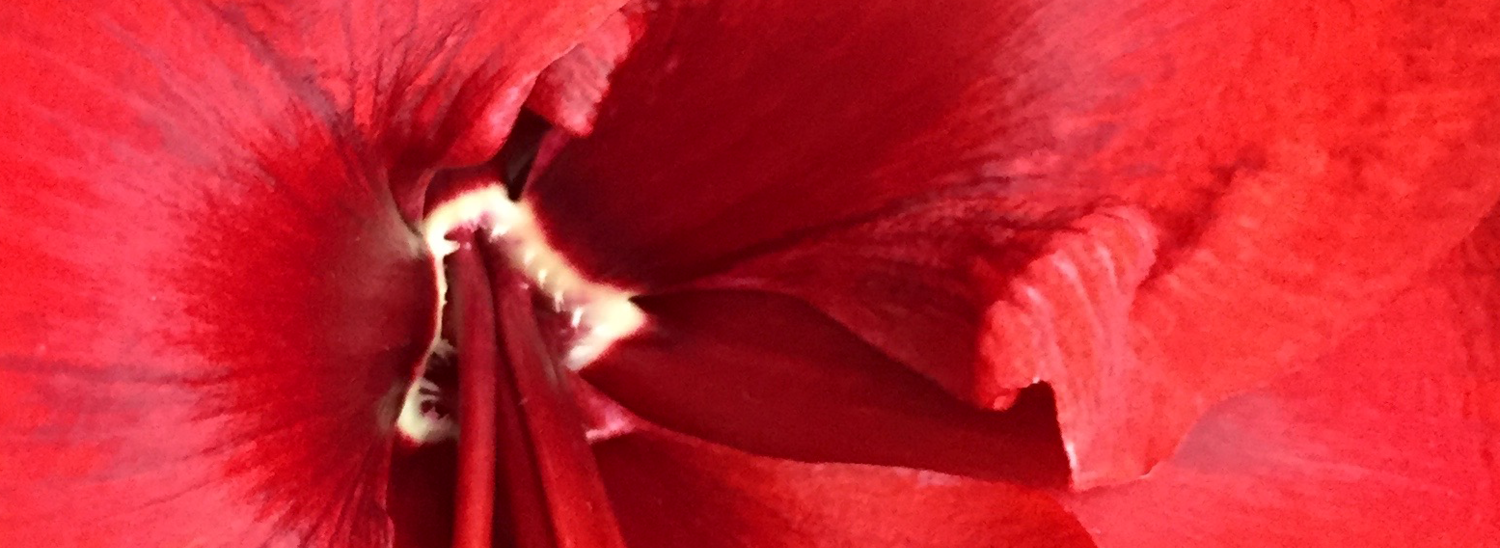A Red With a Global Impact
 by Sandra Sampson, Simple Modern Style, and CMG’s VP Communications & PR
by Sandra Sampson, Simple Modern Style, and CMG’s VP Communications & PR
Ever question why the color red has been treasured in art history for so long? Previously on display at the Bowers Museum in Santa Ana, “The Red that Colored The World” exhibit showed the discovery, science and application of the tiny cochineal which has reached around the globe.
What makes red so intriguing?
“This particular color — long associated with power, wealth, seduction and violence — comes from a tiny insect called the American cochineal, the size of the head of a pin. The bugs are ground up to make an unequalled red dye, a pigment that’s had global reach over centuries. The exhibit “The Red that Colored the World” (McCleery, 2015) gave a fascinating view into the color red.
The cochineal traveled with the Spaniards from Mexico and Peru in the 1500s. It became a valuable commodity in Europe where a pure red hue had not been created. Since then the color has covered the globe and can be found in textiles, food and cosmetics, to name a few.
The show has several recommended-reading books for those who really desire the full story of the “…global trade and Spanish influences…” (Boessenkool, 2015) behind the cochineal and I have included these references at the end of this story.
How does one color source create so many color variations?
“Producing a deep crimson carmic acid, the female cochineal insect (Dactylopius coccus) breeds on the pads of the prickly pear cactus. This liquid is extracted from their dried bodies in boiling water.” (Zafran, 2015)
Is it really that simple? Not really. First the bugs need to be harvested from the prickly pear cactus. Ouch! But the “…cultivators learned how to breed the plant for fewer spines and the bug to maximize the red fluid of its innards.”. (Landi, 2015) And then it is dried and ground up very fine.
“The tiny cochineal bug is an unlovely thing, midway in appearance between a beetle and a cockroach. Yet when the insect is ground up with its eggs and hundreds of its fellows, the powder produced can be coaxed into a dazzling rainbow of reds—from pale pinks to deep burgundies, purples and flaming scarlets.” (Landi, 2015)
Balmaru Perez Menzoxa from Oaxaca is a fabric dyer who’s video of his dying process was included in the Bowers Museum show. In that video he hinted at the reasons that one cochineal bug can produce so many hues.
A brief video (at the end of this post) is Balmaru briefly discussing the impossibility of getting the same color twice and the dying process.
The mordants help to create “…a variety of reds from it. Depending on what other ingredients are used, red from the cochineal can range from a melon-colored pink to mauve to almost black. Tin makes for a fiery red-orange. Alum creates a bluish purple.” (Boessenkool, 2015)
A mordant is a chemical binding agent. They help dyes become naturally fast which allows year of color wear. “Mordants, while necessary, were a challenge to master, especially as each produced different colors from the same dyestuff. The temperature of the dyebath—the mixture of water, dyestuffs, and other ingredients—was often crucial to the color, as was the amount of time the cloth remained in the dyepot. Even the dyepot itself could affect the color of the cloth, if its metal reacted with the dye.” (Greenfield, A Perfect Red; Empire, Espoinage, and the Quest for the Color of Desire, 2005)
Why the cochineal?
It was in the versatility of the cochineal hues and its lasting color the cochineal was in high demand.
“Cochineal, in other words, was the closest thing Europe has ever seen to a perfect red. Besides producing striking scarlets and crimsons, it could be made to yield soft pinks and roses, which appeared very fragile but which were in fact very fast.” (Greenfield, A Perfect Red; Empire, Espoinage, and the Quest for the Color of Desire, 2005)
Today, products, art, cars, spaces, and people sporting the color red have a visual impact beyond others. It brings out strong emotions. It attracts (love) and detracts (danger).
The cochineal has a traveling history of global proportions. Across cultures the color red has been embraced and made into products that are unique for each. The science and art of creating the red variants is a craft that hopefully will not be forgotten with the advent of chemical dyes. How one tiny bug the size of a pin top can create and visual emotional impact so strong is truly amazing!
Further Reading
A Red Like No Other: How Cochineal Colored The World. Edited by Carmella Padilla and Barbara Anderson. 320 pp. incl. 350 col. ills. (Skira Rizzoli, New York, 2015), $60. ISBN 978–0–8478–4643–6.
A. Butler Greenfield: A Perfect Red: Empire, Espionage, and the Quest for the Color of Desire, New York 2005; and E. Phipps, ed.:
Cochineal Red: The Art History of a Color (adapted from The Metropolitan Museum of Art Bulletin, 67/3), New York 2010.
Bibliography
Boessenkool, A. (2015, November 7). Santa Ana museum shows how a bug changed fashion and fabric. Retrieved 2 17, 2016, from Orange County Register: http://www.ocregister.com/articles/cochineal-691023-color-red.html
Bowers Museum. (2015, October 31). The Red That Colored The World. (S. F. Museum of International Folk Art, Producer) Retrieved February 17, 2016, from Bowers Museum: http://www.bowers.org/index.php/exhibitions/current-exhibitions/417-the-red-that-colored-the-world
Greenfield, A. B. (2005). A Perfect Red, Empire, Espionage, and the Quest for the Color of Desire (1st ed. ed.). New York, NY, USA: Harper Perennial.
Greenfield, A. B. (2005). A Perfect Red; Empire, Espoinage, and the Quest for the Color of Desire. New York, NY, USA: Harper Perennial.
Landi, A. (2015, August 5). ‘The Red That Colored the World’ Review. Retrieved February 17, 2016, from The Wall Street Journal: http://www.wsj.com/articles/the-red-that-colored-the-world-review-1438806704?mod=rss_Leisure_and_Arts
McCleery, K. (2015, August 13). The perfect shade of red comes form a bug you’ve never heard of. Retrieved February 17, 2016, from PBS Newshour: http://www.pbs.org/newshour/art/perfect-shade-red-comes-bug-youve-never-heard/
Zafran, E. M. (2015, October 1). Cochineal. Retrieved February 17, 2016, from The Burlington Magazine: http://www.burlington.org.uk/archive/exhibition-review/cochineal
Reposted with permission, Simple Modern Style







